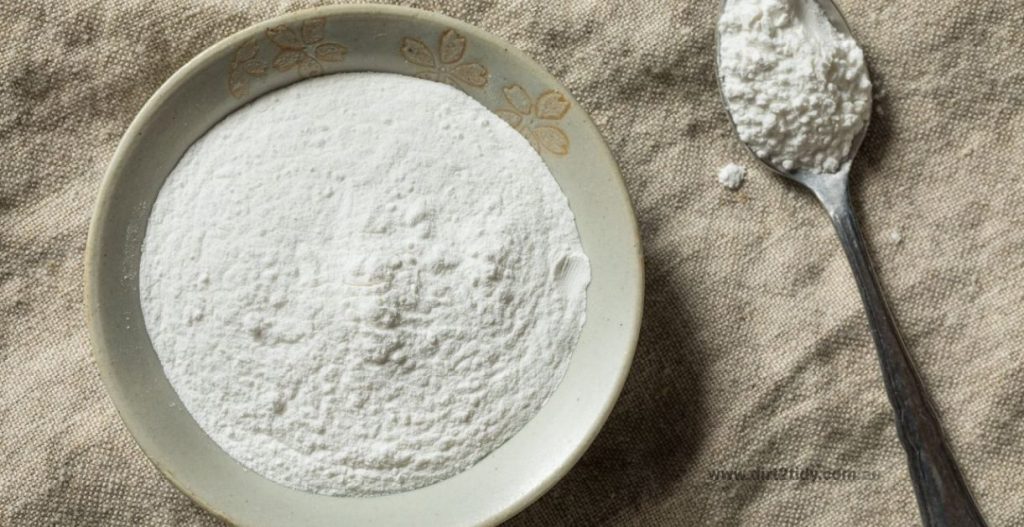Table of Contents
Drains that take too long to empty are an annoyance for any homeowner. However, if the only problem you’re having is a sluggish slow drain, you might not feel the need to call in a plumber just yet, despite the fact that you really should.
Your initial inclination may be to purchase a commercial drain cleaner. However, many cleaners include harsh chemicals (such as sodium hydroxide) that are harmful to your plumbing system and should be avoided at all costs.
The good news is that there is a large selection of drain cleaners that you can make at home, all of which are harmless to your plumbing system or kitchen sink.
The following are some of the most effective DIY drain cleaners that can be used to restore the plumbing system in your home to working order.

How Often Should You Clean Your Drains?
Regular drain maintenance is the key to avoiding stubborn clogs and slow-draining sinks. Instead of waiting until water starts backing up, get ahead of the game and make cleaning your drains a routine part of your home upkeep.
For most households, a good rule of thumb is to clean your drains at least once a year. However, if your kitchen sees heavy use or you have a larger family, consider stepping up your efforts:
- Quarterly Cleaning: For busy kitchens or bathrooms frequently in use, cleaning every three months helps prevent buildup of soap, grease, and other debris.
- Monthly Maintenance: If you’re aiming for smooth-flowing drains all year round, a quick monthly cleaning only takes a few minutes and can save you from bigger plumbing headaches down the road.
This simple habit helps keep everything running smoothly, so you can avoid the time, cost, and hassle of dealing with a major clog.
Why Regular Drain Maintenance Matters
Most homeowners don’t think twice about their drains—until that telltale gurgle or slow emptying water drives everyone into action. The reality is, drains are like the unsung heroes of our homes, quietly whisking away water and debris day after day. But like any other part of your home, they need a little TLC to keep performing their best.
Neglecting your drains can lead to pesky clogs, unpleasant odors, and even the risk of more serious plumbing mishaps down the line. Instead of waiting for a stubborn blockage to ruin your weekend plans, make regular cleaning part of your home routine. Taking just a few minutes once a month to treat your drains to a homemade cleaner can keep them running clear—no plumber required.
The payoff? Fewer slow drains, less chance of emergency repairs, and a fresher, healthier plumbing system overall. So, don’t wait for a crisis! A bit of preventive care goes a long way in keeping those pipes—and your peace of mind—flowing smoothly.
Baking Soda with Vinegar
Baking soda, also known as sodium bicarbonate, combined with vinegar, is likely to prove to be one of the most effective DIY drain cleaners available. To begin the process of unclogging a drain in a sink or bathtub, remove the stopper from the drain so that you have access to it.
After that, carefully and slowly pour a saucepan of boiling water down the drain in a slow and steady stream. Next, pour in 1/2 cup of baking soda, and then another half cup of vinegar.
To stop the mixture from escaping via the drain, reinsert the drain stopper or, if you don’t have one, cover the drain with a piece of fabric or duct tape to keep it from escaping.
After allowing the combination to settle for ten to fifteen minutes, flush the drain with a second pot of boiling water and run hot water from your tap for a minimum of thirty seconds. Proceed with the process as many times as required for tough clog.

Baking Soda with Lemon Juice
If you’re looking for a quick and natural alternative to commercial drain cleaners, baking soda paired with lemon juice is a great option—especially if you’d like your kitchen to smell fresh afterward.
Start by removing the drain stopper so you have clear access. Pour 1/2 cup of baking soda directly into the drain, followed immediately by 1/2 cup of freshly squeezed lemon juice. Cover the drain with the stopper or use fabric or duct tape to trap the fizzing reaction inside, giving it the best chance to work on any grime or build-up lurking below.
Let this citrusy solution sit undisturbed for about ten to fifteen minutes. Afterward, follow up by slowly pouring a pot of boiling water down the drain to flush away residues. Not only does this method tackle minor clogs, but your kitchen or bathroom will enjoy a clean, lemony aroma as a bonus. If the water still drains slowly, don’t hesitate to repeat the process until the clog clears.
Dishwashing Liquid with Steam Water
Dish soap and hot water have been shown to be an effective combination for cleaning drains when used in the right proportions. This technique is fantastic for dislodging those annoying grease plugs with soap scum.
Combine three to five teaspoons of liquid dish soap with two liters of water that has been brought to a boil. While carefully pouring the liquid down the drain, be on the lookout for any splashes that may occur.
It’s possible that you’ll need to carry out the approach several times in order to remove the grease blockage. This is just one of the numerous homemade drain cleaners that are safe for your plumbing system; also, it is so simple that any homeowner may give it a shot with no effort.
Three ingredients: borax, salt, and vinegar
You can’t go wrong with this tried-and-true combo of borax, salt, and vinegar when you’re looking for the best DIY drain cleaners.
Put the following ingredients into a saucepan of boiling water:
- 1/4 cup Borax
- 1/4 cup salt
- 1/4 cup vinegar
- Hold this mixture for a full hour before proceeding (you will notice the mixture becomes clear). After that, you should shower down the drain and then flush it out with some hot water from the faucet.

Tartar with Sodium Bicarbonate
Say hello to this one-of-a-kind cleaner if you are prepared to say goodbye to clogged drains once and for all. Drain cleaners that won’t damage your plumbing system are hard to come by, but homemade concoctions like this one are a sure way to get the job done.
Cream of tartar is an excellent cleaner for metals, while baking soda, which produces carbon dioxide, can help break up minor obstructions by releasing the gas.Cream of tartar and baking soda should be combined in a mixture of two teaspoons and two cups.
The use of hot water is required in order to achieve the greatest results while making a DIY drain cleaner. After adding the cleaner, wait an hour before proceeding to clean the drain after first pouring two cups of hot water down it.
Baking Soda and Salt
The final component of our at-home treatment for clogged drains is a mix of one-half cup of baking soda and one-half cup of salt. Put the mixture in the garbage disposal of your kitchen or bathroom sink and let it rest for anywhere from half an hour to eight hours.
Last but not least, clean your drain by pouring a saucepan of hot water down it. Be very careful when you pour boiling water down the drain; doing so can be quite hazardous.
What if Your Drain Is Still Clogged?
If your drain is still giving you trouble after trying these homemade solutions, don’t be discouraged—sometimes stubborn clogs need a little extra persuasion. Simply repeat the process with another round of your chosen mixture, ensuring you allow plenty of time for the ingredients to work their magic.
If the blockage is especially persistent, consider giving it another go, or try a different combination from the options above. Having a little of your homemade mixture left over? Save it for future emergencies; you’ll be glad to have it on hand the next time a drain slows to a crawl.
Always remember: patience and a bit of persistence with these time-tested recipes can usually tackle most minor clogs. If all else fails, a trusty plunger or plumber’s auger might be your next best weapon before calling in a professional.




